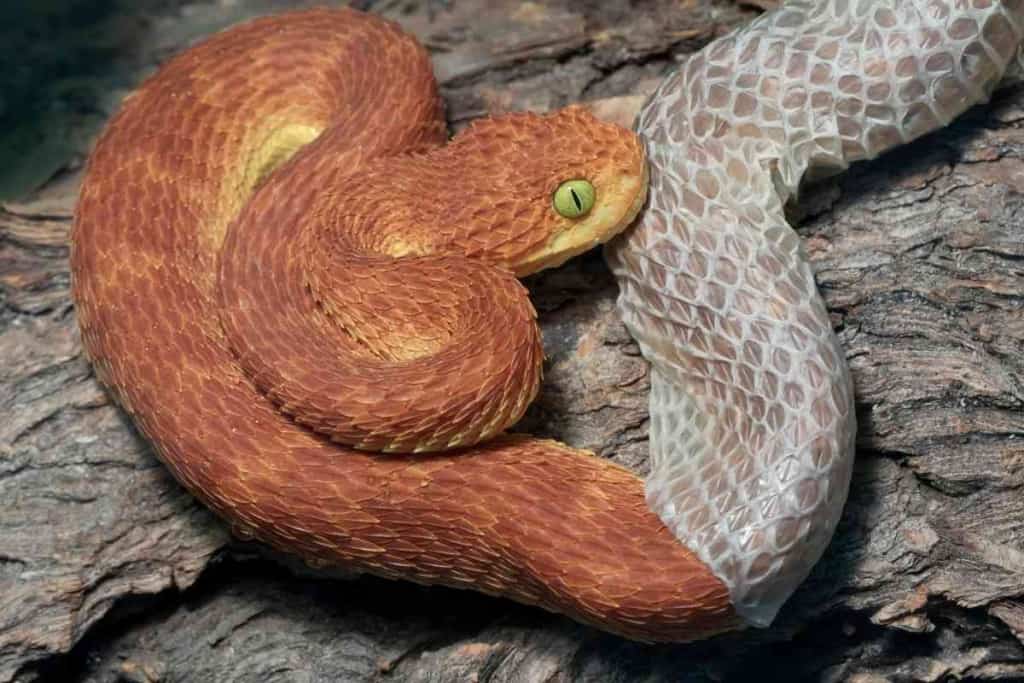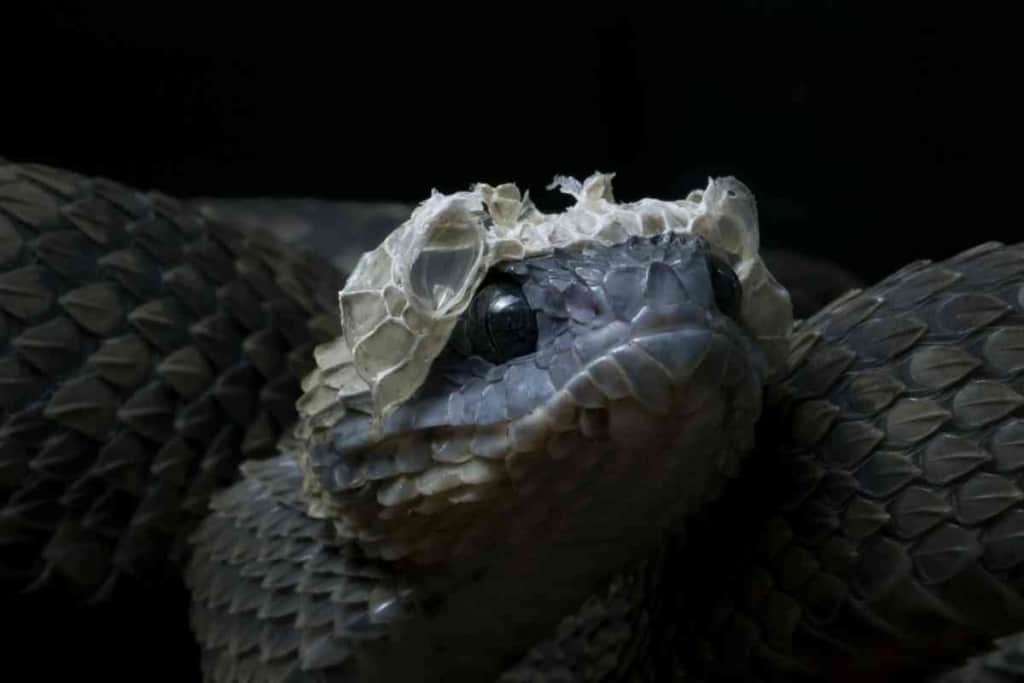How Often Should A Snake Shed? What’s Healthiest?
Snakes are ectothermic creatures, which means they rely on their environment to regulate their body temperature. But how often should a snake shed? As a pet snake owner, it’s essential to be aware of the snakes’ natural behavior and needs. Knowing how often your snake sheds will help you anticipate and manage skin problems. Regular shed checks can also help ensure your snake is healthy and comfortable.

How frequently should my snake shed?
Snakes undergo a shedding process called molting or ecdysis, which allows them to grow, usually three to six times yearly. The old skin comes off in one piece, starting at the head end and working its way down the length of the snake’s body. The snake will be briefly vulnerable once the skin has been shed.
Once free of the old skin, the snake’s new skin is initially pale and delicate. However, it quickly hardens and darkens to match the snake’s typical coloration. Molting helps snakes remove parasites and damaged scales and allows them to grow and regenerate lost body parts. As a result, ecdysis is essential for snakes to maintain their health and vitality.
Snakes shed their skin regularly as they grow, but there is some debate on how often they should shed. This expert review looks at the different factors that influence how often snakes shed and offers recommendations on how often you can expect your snake to shed.
Can A Snake Shed Too Often?
Snakes are one of the most misunderstood creatures on the planet. Though they have been feared throughout history, they are very gentle creatures that play an essential role in the ecosystem.
One of the fascinating things about snakes is their ability to shed their skin. This process, known as molting, helps them grow and eliminate parasites. However, molting can also be a sign of distress in snakes.
If a snake is shedding too often, it may indicate something is wrong with its environment. For instance, if the humidity level is too low, it can cause the snake to shed more frequently. Likewise, if the temperature is too high or too low, it can also lead to excessive shedding. If you suspect your snake is shedding too often, it’s important to take a closer look at its habitat and ensure that everything is just right.
How Long Can a Snake Go Without Shedding?
Snakes are often feared for their ability to go long periods without food. But how long can they go without shedding? If a snake doesn’t shed, its old skin will tighten and restrict growth.
In extreme cases, the constriction can even cut off circulation and lead to tissue death. For this reason, most snakes will shed their skin every few weeks to ensure that they can continue to grow and thrive.
However, some snakes may go longer between sheds, mainly if they are stressed or ill. In such cases, shedding may be delayed by several weeks or months. Ultimately, the length of time a snake can go without shedding depends on the individual snake and its circumstances.
Is it OK To Handle a Snake While Shedding?

While most people would probably recoil at the thought of handling a snake, some find the experience strangely intriguing. For those who enjoy working with snakes, shedding season can be an opportunity to get up close and personal with these fascinating creatures. But is it safe to handle a snake while it is shedding?
The answer depends on the snake. Some species are relatively docile during shedding and can be handled without incident.
Others, however, may become agitated and aggressive. In general, it is best to err on the side of caution and avoid handling any snake while it is in the process of shedding its skin. If you must handle a shedder, be sure to use gloves and take care not to damage the delicate new skin. With a bit of patience and respect, you can safely enjoy working with snakes during shedding season.
Should You Help Your Snake Shed?
One of snake owners’ most common questions is whether or not they should help their reptile friend shed its skin.
While it may be tempting to assist, it’s generally best to leave sheds to the snakes themselves. Shedding is essential for maintaining healthy skin and preventing disease; interfering can do more harm than good.
During a shed, a snake’s body produces a thin layer of clear mucus that helps to loosen the old skin. The snake then rubs against rough surfaces to peel off the old skin in one piece. If everything goes according to plan, the entire process should take less than an hour.
However, if a shed is interrupted, it can result in serious health problems for the snake. Incomplete sheds can cause the formation of thickened patches of skin, known as dysecdysis. These patches can impede the snake’s movement and make it more susceptible to infection. In extreme cases, dysecdysis can even lead to death. For these reasons, it’s best to let nature take its course and let your snake shed on its own.
How Many Times a Month Does a Snake Shed?
Humans often fear snakes, but they can make fascinating pets. One quirk of these reptiles is that they regularly shed their skin. This process will occur once every two to four weeks for young snakes between the ages of one to six months. For older snakes between the ages of two and six, shedding happens once every one to three months.
After a snake reaches six years old, it will only shed its skin once a year. The shedding process typically takes anywhere from 24 to 72 hours. During this time, the snake will become lethargic and stop eating. Its eyes will also become cloudy as the old skin peels away. Once the shedding is complete, the snake will be left with a bright and shiny new coat of skin.
Should I Feed My Snake While Shedding?
When a snake sheds its skin, it undergoes a process called ecdysis. The old skin is aggressively shed during ecdysis to make room for the new skin underneath.
This process can take anywhere from a few days to a couple of weeks; during this time, the snake may not have much appetite. As a result, some snake owners choose to withhold food from their pets during this period.
Since snakes are ectotherms, they rely on the warmth of their environment to help them digest their food. When snakes shed their skin, they become more sensitive to changes in temperature. As a result, feeding your snake during this time can be tricky. If the food is too cold, it can make your snake’s shedding process even more difficult.
If the food is too hot, it can cause your snake to stop eating altogether. The best way to avoid these problems is to offer your snake pre-killed prey that has been cooled to room temperature. This will help your snake digest its food properly and shed its skin without complications.
